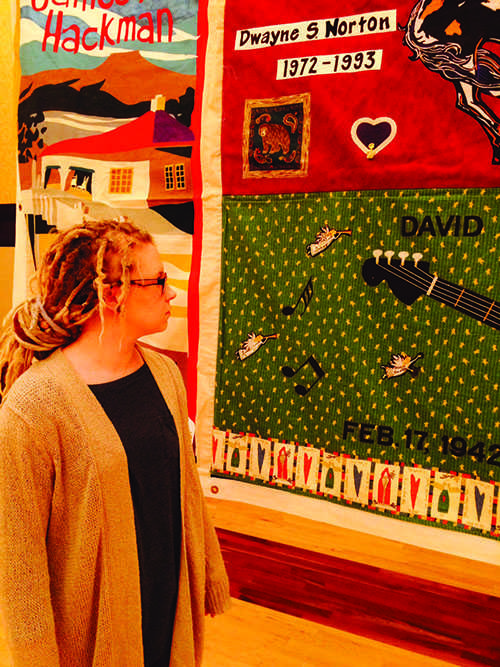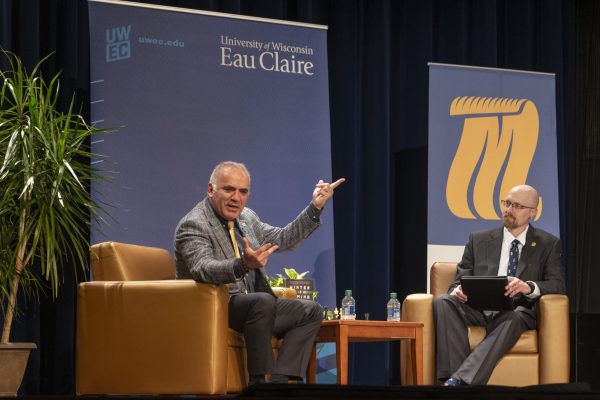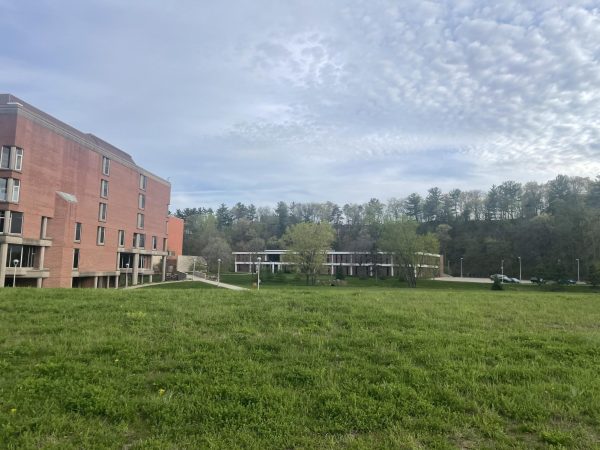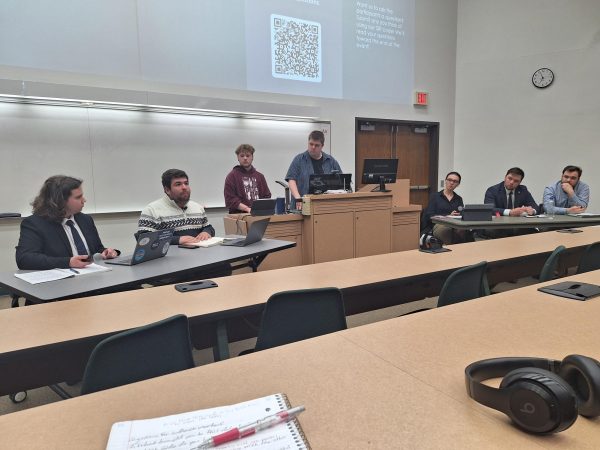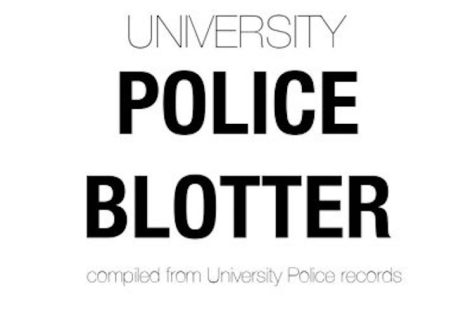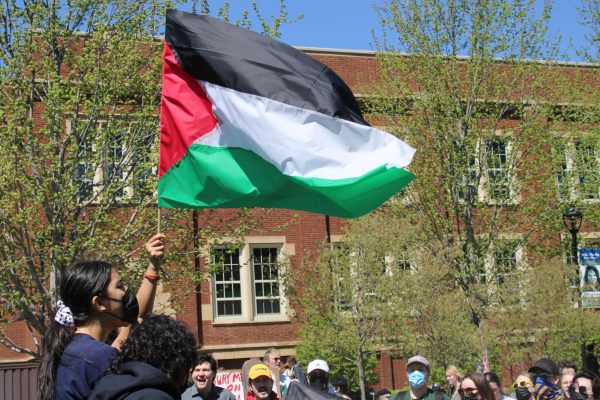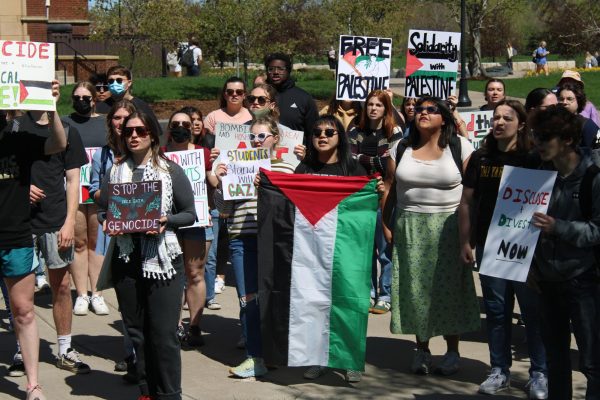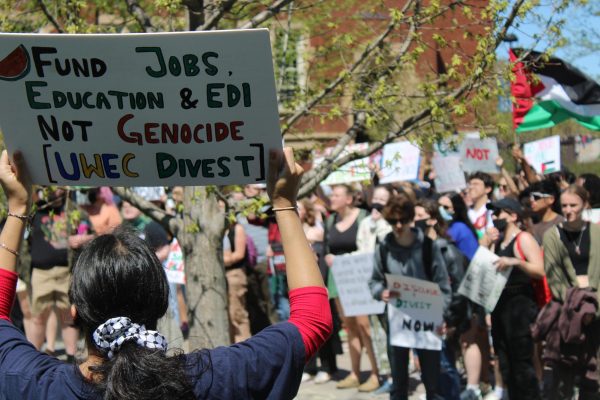Draped with memories
Memorial quilt full of love for those lost
Kendall Mager volunteers at the AIDS Resource Center of Wisconsin, where she was part of the AIDS Memorial Quilt project. – Photo by Jessie Tremmel
December 11, 2014
“I miss you mommy. Love, Victor.” “Never forget.”
“Seeing the messages that the loved ones posted for the loved ones they lost,” Kendall Mager, a UW-Eau Claire senior, said with tears in her eyes. “It really put a name and a face to the statistic. It is thought provoking. It is emotional. It is important.”
The AIDS Memorial Quilt was born from the AIDS crisis in the ‘80s and ‘90s and consists of over 48,000 3-by-6-foot patches memorializing those who have died due to AIDS. Each quilt section features eight patches and is twelve feet square. This past week, 46 quilt sections were on display in the Ojibwe Ballroom.
When she first saw The Quilt, the women’s studies major was overcome with emotion, which she said she wasn’t expecting. She said that the effects of the disease don’t really hit home until you see the people actually affected by the disease.
Mager said she didn’t really think much about people who are living with AIDS and HIV before volunteering at the AIDS Resource Center of Wisconsin, where she has been spending time the last three months working to be trained in the Clean Needle Exchange Program.
A lack of education about AIDS and HIV is common among college students, Mager said, because it was such an epidemic back in the ‘70s and ‘80s.
“I feel like that is dangerous,” Mager said. “I think that they think that as straight people, they are immune to it and that it only really affects the gay community. Obviously we know that’s not true.”
AIDS and HIV affect many more people than we realize, as is evidenced by the massive memorials that filled the Ojibwe Ballroom.
The 54-ton community art project started 30 years ago and became a worldwide symbol of the AIDS crisis, Chris Jorgenson said.
“It absolutely has the ability to start conversations where they need to be started, to give people the opportunity to understand the impact that HIV and AIDS had and, most importantly, continues to have,” said Jorgenson, the director of the Women’s and LGBTQ Resource Center.
With 32 million people living with AIDS worldwide, Chris Jorgenson, the director of the Women’s and LGBTQ Resource Center, said The Quilt should serve as a reminder because AIDS is again becoming a silent killer.
He said 50,000 people are diagnosed with HIV in the United States every year.
“Now it’s kinda the forgotten population of people,” Mager said. “Volunteering at the AIDS Resource Center has really enlightened me, that people living with AIDS still exist. It is still an issue.”
The 54-ton community art project started 30 years ago and became a worldwide symbol of the AIDS crisis, Jorgenson said.
“It absolutely has the ability to start conversations where they need to be started to give people the opportunity to understand the impact that HIV and AIDS had,” Jorgenson said, “and, most importantly, continues to have.”

